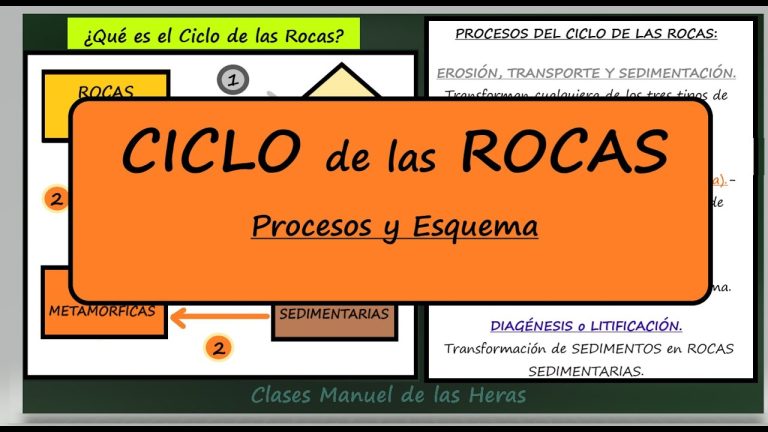Todo lo que necesitas saber sobre el ciclo de Mohr: concepto, aplicaciones y ejemplos
What is the Mohr Cycle and why is it important?
The Mohr Cycle is a concept widely used in engineering and materials science to analyze stress-strain relationships. It is an essential tool used to determine the strength and durability of various materials. Understanding this cycle is crucial for engineers and researchers to design structures capable of withstanding different loads and conditions.
The cycle is named after Christian Otto Mohr, a renowned German engineer who introduced the concept in the 19th century. The Mohr Cycle represents stress and strain on a graph, allowing engineers to identify the material’s elastic and plastic regions. This information is crucial in predicting the material’s behavior under different conditions and designing structures with optimal strength and safety.
The significance of the Mohr Cycle lies in its ability to accurately predict the deformation and failure of materials. By analyzing the cycle, engineers can understand how a material will respond to external forces, such as pressure or temperature changes. This information helps in designing materials that can withstand harsh conditions, ensuring the longevity and safety of various structures, including bridges, buildings, and aircraft components.
Additionally, the Mohr Cycle enables engineers to assess the stability and performance of materials under different loading conditions. It provides valuable insights into the limits and boundaries of a material, allowing engineers to determine the maximum stress it can endure before failure. This knowledge is essential for designing structures that can handle the expected loads and prevent catastrophic failures.
How is the Mohr Cycle calculated?
When assessing the stability and strength of materials under different loading conditions, engineers often rely on the Mohr Circle. This graphical representation is a powerful tool that allows them to determine the state of stress at a point within a material subjected to different loads.
To calculate the Mohr Circle, we need to consider the principal stresses acting on a material in two perpendicular directions. These stresses can be determined by knowing the normal (tensile or compressive) and shear stresses acting on the material.
The first step in calculating the Mohr Circle involves determining the two principal stresses. These can be obtained by solving the quadratic equation derived from the equation of equilibrium in two dimensions. The solutions to this equation correspond to the two principal stresses.
Once we have the principal stresses, we can plot them on a graph, using the x-axis and the y-axis to represent the normal stresses acting in two perpendicular directions. The two principal stresses are plotted as points on the graph, and a circle with a diameter equal to the difference between the two principal stresses is drawn.
Applications of the Mohr Cycle
The Mohr Cycle, named after German engineer Otto Mohr, is a graphical representation used in material science and engineering to analyze the stress and strain characteristics of materials subjected to cyclic loading. This concept has several applications in various engineering fields, including structural design, fatigue analysis, and failure prediction.
One of the key applications of the Mohr Cycle is in structural design, particularly in the field of civil engineering. Engineers utilize this graphical representation to understand how materials behave under repeated loading conditions, helping them design structures that can withstand cyclic stresses without failure. By analyzing the Mohr Cycle, engineers can make informed decisions regarding material selection, construction techniques, and reinforcement requirements.
Another important application of the Mohr Cycle lies in fatigue analysis. Fatigue failure occurs when a material experiences repeated loading and unloading cycles, leading to the accumulation of microcracks and eventual fracture. By analyzing the stress and strain values obtained from the Mohr Cycle, engineers can predict the fatigue life of a material and design components that can withstand the anticipated number of loading cycles. This enables them to enhance the reliability and durability of various mechanical systems and prevent catastrophic failures.
Furthermore, the Mohr Cycle has found applications in failure prediction. By examining the stress and strain distribution depicted in this graphical representation, engineers can estimate the point of failure and identify potential stress concentration areas in materials and structures. This information is crucial for improving design parameters, optimizing load distribution, and preventing unexpected failure during operation.
Tips for interpreting the Mohr Cycle
The Mohr Cycle is a widely used graphical representation that helps in interpreting the stress and strain characteristics of materials. It is commonly used in the field of mechanical engineering, geotechnical engineering, and material science.
When it comes to interpreting the Mohr Cycle, there are a few key tips to keep in mind. Firstly, understanding the basic concepts and components of the cycle is crucial. The cycle consists of a circle that represents stress, with the x-axis representing normal stress and the y-axis representing shear stress. It is important to have a clear understanding of these axes and how they relate to the behavior of materials.
Secondly, it is important to familiarize yourself with the different regions of the Mohr Cycle. These regions include the elastic region, plastic region, and failure region. Each region provides valuable information about the material’s characteristics and behavior under different stress conditions. By analyzing these regions, engineers can make informed decisions about the material’s suitability for specific applications.
Lastly, it is essential to understand how to interpret the Mohr Circle to determine the maximum shear stress and the principal stresses. This involves identifying the points on the circle that correspond to the maximum and minimum normal stresses, and then using these values to calculate the shear stress. By understanding these calculations, engineers can gain insight into the material’s strength and stability.
Conclusion
En esta conclusión, quiero resaltar los puntos clave que hemos discutido a lo largo de este artículo.
Primero, hemos explorado la importancia de la optimización para motores de búsqueda (SEO) en la creación de un blog exitoso. A medida que los algoritmos de los motores de búsqueda se vuelven más sofisticados, es esencial implementar estrategias SEO efectivas para aumentar la visibilidad de tu blog en los resultados de búsqueda.
Además, hemos analizado cómo los encabezados HTML desempeñan un papel crucial en la organización y estructura de tu blog. El uso adecuado de etiquetas de encabezado jerarquizado, como H1, H2 y H3, no solo mejora la legibilidad de tu contenido, sino que también ayuda a los motores de búsqueda a entender la información clave de tu blog.
Por último, hemos destacado la importancia de escribir contenido relevante y de calidad para atraer y retener a los lectores. El contenido bien redactado, junto con el uso estratégico de palabras clave relevantes en los encabezados y en todo el artículo, puede ayudar a aumentar la autoridad de tu blog y a impulsar su posicionamiento en los resultados de búsqueda.







